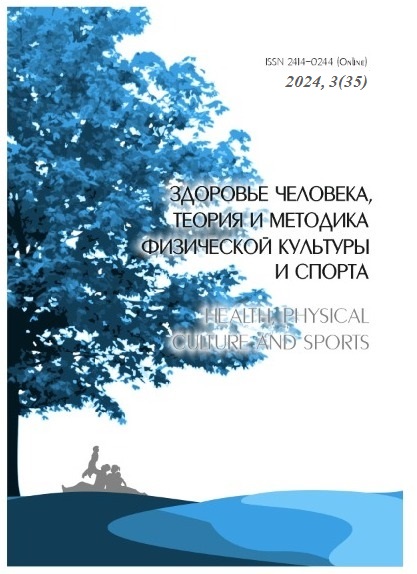FROM PHYTOMORPHISM THROUGH METAPHORICAL TERMINOLOGIZATION IN MEDICINE
Abstract
Objectives: to frame the study in theoretical terms - Fauconnier and Turner’s Theory of Conceptual Blending; to identify and excerpt English phytomorphic metaphors from medical discourse; to study the conceptual dimension and outline the concept constituents of each phytomorphic medical metaphor; to follow up the conceptual transition based on the constituents’ correlations of source domain and target domain in mapping and dynamics of meanings in generic space until generating a new metaphorically loaded structure in blending; to present overall dynamics of processes leading to blending in figures; to raise the terminological metaphorical awareness and linguistic medical competence of medical students and professionals. Materials and research methods. Eighty-four (84) one-word and compound English phytomorphic metaphorical terms units from medical domain served as material for the study. Methods of semantic dictionary analysis, definition analysis, conceptual integration (cognitive analysis), component analysis, statistical method have been applied. Discussion and results of the study. The essence of the mental space is outlined, the key ideas laid down in Fauconnier and Turner’s Theory of Conceptual Blending - integration processes with information exchange, terminologicalization and emergence of a resulting structure with a new meaning. The significance of phytomorphic metaphors for a better understanding of anatomical objects, symptoms and syndromes, diseases has been pointed out. The stages of formation of three exemplary phytomorphic metaphors (Hair bulb, Maple syrup urine disease, Strawberry tongue) have been followed up: associative correlations, mapping and sharing common information volume, blending, conceptualization and generating a new terminological unit. Conclusions. The following conclusions have been drawn: 1. Mapping of real-world objects lexis and medical terms in input mental spaces (source-input space 1, target-input space. 2. Unifying the common conceptual dimension of the two input spaces in the generic mental space with motivational features: shape, place, function, surface, consistency, smell, colour. 3. Terminologicalization of constituent lexemes in conceptual blending and generating of a new metaphorical unit with a difference in conceptual dimension. 4. Anatomical objects, symptoms, syndromes and diseases prove to be the most frequent nominations expressed by means of phytomorphic metaphors. 5. The levels of information processing for the entire corpus of English phytomorphic metaphors excepted from the medical discourse and studied (84) follow the algorithm of Fauconnier and Turner's four-frame model.
Downloads
References
Маккормак Ъ. Когнитивная теория метафоры. В: Арутюнова Н. Д. (сост.) Теория метафоры. Москва: Прогресс, 1990, С. 380 – 381.
Чудинов, А. & Будаев, Е. Становление и эволюция когнитивного подхода к метафоре. Новый филологический вестник, 1 (4), 2007.
Fauconnier, G. Mental spaces. Cambridge: Cambridge University Press, 1994.
Fauconnier, G. Mappings in Thought and Language. Cambridge: Cambridge University Press, 2006.
Fauconnier, G. & Turner, M. Conceptual blending, form and meaning. In: Sémiotique cognitive - Cognitive semiotics, vol. 19, 01. 03. 2003. https://ojs.uclouvain.be/index.php/rec/article/view/48413
McGavock H., Johnston D. & Lockett T. Treating. Common Diseases. An Introduction to the Study of Medicine 1st edition, London: Radcliffe Publishing Ltd, United Kingdom, 2007.
Lakoff, G. 1993: The contemporary Theory of Metaphor in ORTONY, A. (ed.) 1993, Metaphor and Thought, second edition, Cambridge, Cambridge University Press. pp. 202 – 251.
Lakoff, G. & Johnson M. Metaphors we live by. Chicago: Chicago University Press, 1980.
Langacker, R. W. Foundations of cognitive Grammar. Stanford: Polity Press, 1987, p. 147.
MacCormac, E. R. A Cognitive Theory of Metaphor. Cambridge (Mass.) - London: MIT Press, 1985.
Merriam - Webster’s medical dictionary. Masachusetts: Merriam - Webster, Incorporated Springfield, 2016.
Standring, S. Gray's Anatomy: The Anatomical Basis of Clinical Practice 42nd edition. London, King’s College London: Elsevier, 2020.
References:
Arutyunova, N. D. (1990). Metafora i diskurs. Teoriya metafory. Moskva: Progress, S. 5 – 32. (in Russan).
Makkormak ". (1990). Kognitivnaya teoriya metafory. V: Arutyunova N. D. (sost.) Teoriya metafory. Moskva: Progress, S. 380 – 381. (in Russan).
Chudinov, A. & Budayev, Ye. (2007). Stanovleniye i evolyutsiya kognitivnogo podkhoda k metafore. Novyy filologicheskiy vestnik, 1 (4). (in Russan).
Fauconnier, G. Mental spaces. Cambridge: Cambridge University Press, 1994.
Fauconnier, G. Mappings in Thought and Language. Cambridge: Cambridge University Press, 2006.
Fauconnier, G. & Turner, M. Conceptual blending, form and meaning. In: Sémiotique cognitive - Cognitive semiotics, vol. 19, 01. 03. 2003. https://ojs.uclouvain.be/index.php/rec/article/view/48413
McGavock H., Johnston D. & Lockett T. Treating. Common Diseases. An Introduction to the Study of Medicine 1st edition, London: Radcliffe Publishing Ltd, United Kingdom, 2007.
Lakoff, G. 1993: The contemporary Theory of Metaphor in ORTONY, A. (ed.) 1993, Metaphor and Thought, second edition, Cambridge, Cambridge University Press. pp. 202 – 251.
Lakoff, G. & Johnson M. Metaphors we live by. Chicago: Chicago University Press, 1980.
Langacker, R. W. Foundations of cognitive Grammar. Stanford: Polity Press, 1987, p. 147.
MacCormac, E. R. A Cognitive Theory of Metaphor. Cambridge (Mass.) - London: MIT Press, 1985.
Merriam - Webster’s medical dictionary. Masachusetts: Merriam - Webster, Incorporated Springfield, 2016.
Standring, S. Gray's Anatomy: The Anatomical Basis of Clinical Practice 42nd edition. London, King’s College London: Elsevier, 2020.
An author should not normally publish manuscripts describing essentially the same research in multiple journals or publication venues. Such redundant publication is generally considered to constitute unethical publishing behavior, and if discovered may result in a manuscript under consideration being rejected, or a published article being retracted.
Authors of manuscripts reporting on original research should present an accurate account of the work performed, accompanied by an objective discussion of its significance. Underlying data should be represented accurately in the manuscript. The manuscript should contain sufficient detail and references to permit others to replicate the work. The fabrication of results and the making of fraudulent or knowingly inaccurate statements constitute unethical behavior and may be cause for rejection or retraction of a manuscript or published article.





